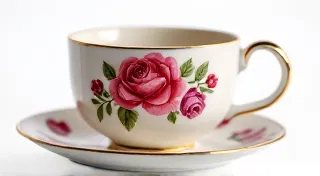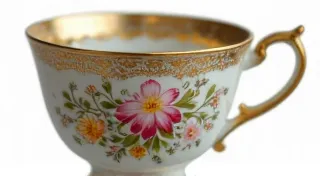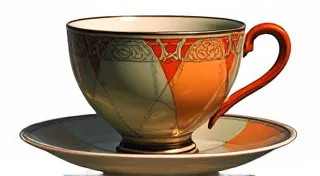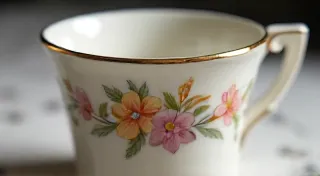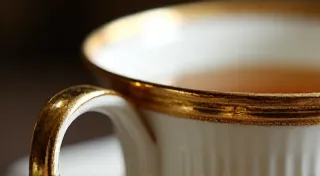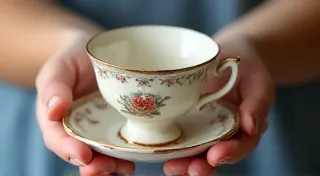Bone China vs. Porcelain: Understanding the Material of Your Tea Cup
Identifying antique tea cups can be a rewarding, and sometimes challenging, endeavor. A crucial element in this process is understanding the materials from which they are made. Two of the most common materials – bone china and porcelain – are often confused, but have distinct characteristics impacting their age, value, and overall aesthetic. This guide will explore the differences between these two types of antique china, providing visual cues and historical context to help you better understand your collection. For those just starting their collecting journey, our Tea Cup Collecting: A Beginner's Guide offers a great introduction to the hobby.
What is Porcelain?
Porcelain, in its simplest form, is a hard, white ceramic material created from carefully refined clay, feldspar, and quartz. The key to porcelain’s distinctive qualities lies in its firing process. It's fired at extremely high temperatures – typically between 1200°C and 1450°C (2200°F to 2640°F) – which vitrifies the material, making it incredibly strong, translucent, and less porous than earthenware.
Porcelain has a long and rich history, originating in China centuries ago. Its exclusivity and difficulty of production initially made it a luxury item coveted worldwide. European porcelain production began in the 18th century, with manufacturers like Meissen, Sèvres, and Wedgwood rapidly developing their own techniques. Understanding the hallmarks of different manufacturers is key to accurate dating; we're working on a guide to Decoding Hallmarks: Your Guide to Identifying Antique Tea Cup Manufacturers to help with this.
Identifying Porcelain Tea Cups:
- Weight: Porcelain typically feels lighter than bone china.
- Sound: When tapped, porcelain produces a clear, ringing tone.
- Translucency: Hold the cup to a light source. Porcelain will exhibit some degree of translucency, though this can vary based on the glaze and thickness.
- Appearance: Generally, porcelain has a smooth, opaque surface.
What is Bone China?
Bone china is a specific type of porcelain that distinguishes itself by incorporating animal bone ash (typically ox or cow bone) into its composition. This addition significantly alters the material’s properties. While the exact percentages vary, bone ash usually accounts for around 50% of the mixture.
The addition of bone ash results in a much softer, whiter, and more delicate material than standard porcelain. It also increases its translucency and makes it exceptionally strong for its weight. Bone china wasn't introduced until the mid-18th century in England, and it quickly became synonymous with high-quality tableware.
Identifying Bone China Tea Cups:
- Weight: Bone china feels lighter than porcelain, despite its strength.
- Sound: Similar to porcelain, bone china produces a clear, ringing tone.
- Translucency: Bone china is noticeably more translucent than porcelain. Hold it up to the light - you're likely to see light pass through more readily.
- Appearance: Bone china boasts a distinctive creamy white color, a result of the bone ash content.
Comparing Bone China and Porcelain: Key Differences
While both bone china and porcelain are beautiful and collectible, understanding their differences is vital for accurate identification and appreciation.
| Feature | Porcelain | Bone China | |---|---|---| | Composition | Clay, feldspar, quartz | Clay, feldspar, quartz, bone ash | | Color | White, sometimes with a slight yellowish tint | Creamy white | | Translucency | Moderate | High | | Weight | Heavier | Lighter | | Origin | China (historically), Europe (later) | England (mid-18th century) | | Value | Varies, depends on age, maker, condition | Generally higher value, particularly for older examples |A Deeper Dive into Styles & Manufacturers
Beyond the fundamental material differences, understanding the evolution of styles and manufacturers is a crucial element in appreciating antique tea cups. The Art Deco period, for instance, saw a surge in unique designs and iconic makers. For those interested in exploring the specific characteristics of this era, our piece on Celebrating the Art Deco Tea Cup: Styles and Manufacturers provides an in-depth look.
Historical Context & Determining Age
The emergence of bone china in England during the mid-1700s offers a useful clue for dating antique tea cups. If your cup is undeniably bone china, it's highly unlikely to be from before that period. Early porcelain, on the other hand, can date back centuries.
Furthermore, researching specific manufacturers and their production techniques can narrow down the age range. Factory marks, though sometimes faded or obscured, are invaluable resources. A little research can go a long way in uncovering your tea cup's fascinating history! Understanding those subtle hallmarks is crucial, and we're developing further resources to aid in identification.
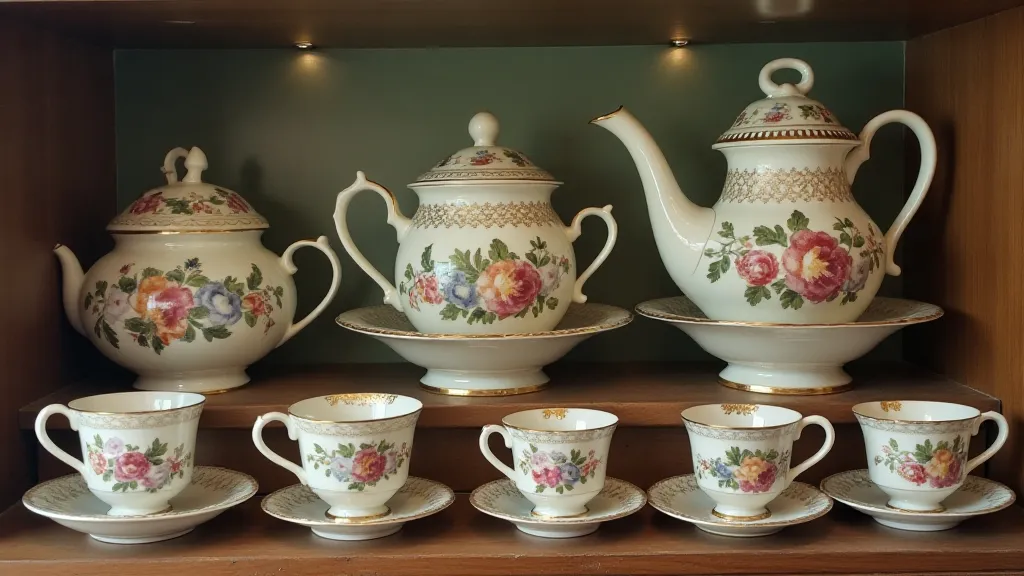
Regional Variations and Production Techniques
The story of porcelain and bone china isn't solely an English one. While England played a vital role in the development of bone china, porcelain production flourished across Europe and Asia. Understanding these regional variations requires a broader appreciation for the history of ceramics. For example, Chinese porcelain, particularly from the Qing Dynasty, is highly sought-after by collectors due to its artistry and historical significance.
Caring for Your Antique Tea Cups
Once you're confident in identifying your tea cups as porcelain or bone china, it's important to understand how to properly care for them. Both materials are delicate and susceptible to damage. Avoid sudden temperature changes, harsh detergents, and abrasive cleaning methods. Hand washing is always recommended. Storage should be careful, padded, and away from direct sunlight. Regular inspection for cracks or chips is also important for preservation.
The Collector's Market
The antique tea cup market is vibrant and diverse, ranging from online auctions to specialized antique shops. Prices vary greatly depending on factors such as age, manufacturer, rarity, condition, and design. Beginner collectors might find it overwhelming, but with knowledge and careful research, it’s possible to build a beautiful and valuable collection. Don't underestimate the power of careful observation and a little bit of luck!
Certain makers and patterns command premium prices. For example, early Meissen porcelain is renowned for its quality and intricate designs, while Royal Albert’s "Old Country Roses" pattern remains a popular choice for many collectors. Staying informed about current market trends and identifying potential bargains requires dedication and a passion for the subject.
Deeper into Bone China – The Manufacturing Process
The manufacturing process of bone china is a complex and fascinating blend of traditional craftsmanship and modern techniques. It begins with sourcing high-quality clay, feldspar, and, crucially, animal bone ash. The bone ash is meticulously processed and incorporated into the clay mixture. This mixture is then carefully molded into the desired shape. Unlike porcelain, bone china often requires a lower firing temperature due to the presence of bone ash.
After firing, the tea cups are glazed and decorated. The glazing process is essential for creating a smooth, durable surface that is resistant to staining. Decorations can range from simple hand-painted designs to complex transfer-printed patterns. The skill and artistry of the decorators contribute significantly to the overall value of the piece.
Many antique bone china tea cups bear the marks of their makers, which can be incredibly helpful in identifying their origin and age. These marks can be found on the base of the cups and saucers and can take many forms, from simple embossed logos to elaborate hand-painted signatures.
For those interested in collecting patterned tea cups, recognizing certain patterns can increase the value of the pieces. Many manufacturers have produced variations on classic patterns over the years, and knowing the history of these patterns can be helpful in identifying the age and rarity of a cup.
Knowing the background of manufacturers like Crown Staffordshire and understanding the evolution of their patterns can be quite rewarding. You can learn more about them in our piece on Identifying Crown Staffordshire Tea Cups: Patterns and Evolution.
